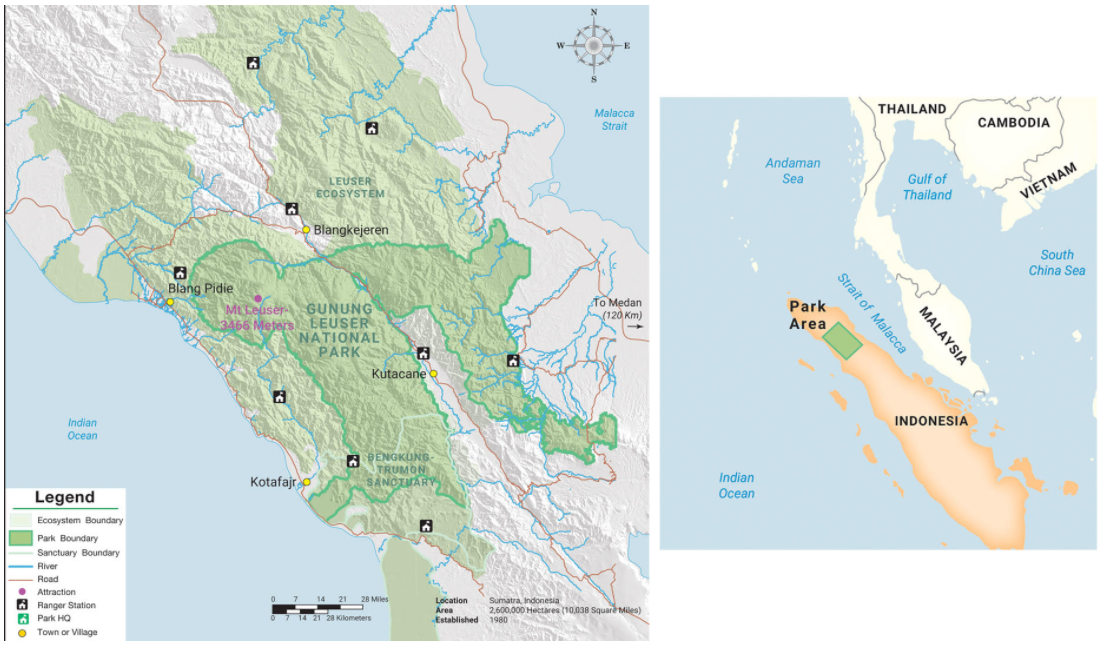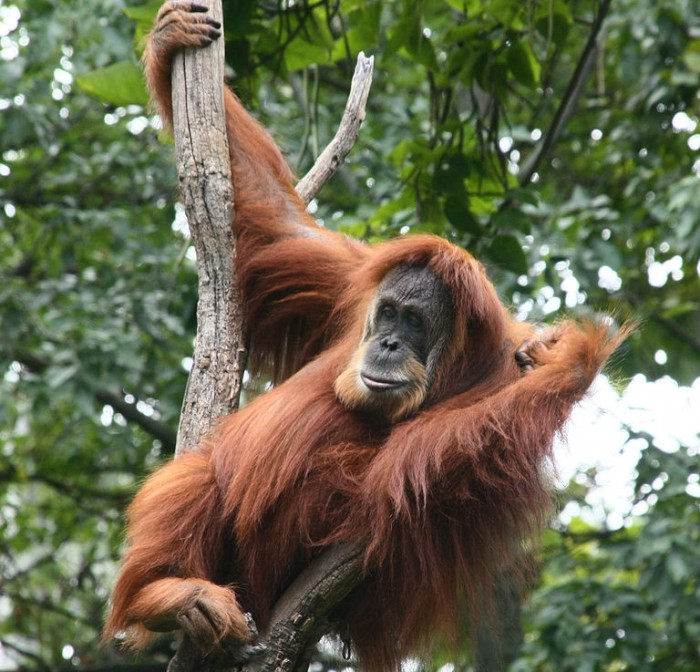Biodiversity & Environment
Leuser Ecosystem
- 26 Sep 2020
- 6 min read
Why in News
Recently, an investigation by the global watchdog Rainforest Action Network (RAN) has shown that various food, cosmetics and finance companies have links with companies implicated in the destruction of the Leuser Ecosystem, a forest area on the island of Sumatra, Indonesia.
Key Points
- Leuser Ecosystem is among the most ancient and life-rich ecosystems ever documented by science and is a world-class hotspot of biodiversity and is widely acknowledged to be among the most important areas of intact rainforest left in all of Southeast Asia.
- The ecosystem has been designated a UNESCO World Heritage Site.
- Location and Topography:
- The ecosystem stretches across the province of Aceh and North Sumatra, Indonesia.
- It spans 2.6 million hectares, almost three times the size of Yellowstone National Park, USA.
- Its diverse landscape includes lowland and montane rainforests and over 185,000 hectares of carbon-rich peatlands.
- Montane rainforests, also called cloud forests, are vegetation of tropical mountainous regions in which the rainfall is often heavy and persistent condensation occurs because of cooling of moisture-laden air currents deflected upward by the mountains.
- Significance:
- Wildlife and Biodiversity:
- It is among the most important forests left in Southeast Asia, particularly because it is the last place of sufficient size and quality to support viable populations of rare species like Sumatran tigers, orangutans, rhinos, elephants, clouded leopards and sun bears.
- 75% of the world’s remaining population of the Sumatran orangutan is found in the ecosystem.
- It is among the most important forests left in Southeast Asia, particularly because it is the last place of sufficient size and quality to support viable populations of rare species like Sumatran tigers, orangutans, rhinos, elephants, clouded leopards and sun bears.
- For Humans:
- The majority of Aceh’s people, between 70-75%, live on the coastal plains of Sumatra, where many communities have established wet rice cultivation.
- The livelihoods and food supply for millions of people rely heavily on the natural services, particularly the water supplies, that the Leuser Ecosystem provides.
- Climate Change:
- It plays an outsize role regulating the global climate by storing massive amounts of carbon in its peatlands and standing forests.
- Peatlands are wet, carbon-rich areas that have formed through thousands of years of undecomposed leaf litter and organic material accumulation.
- When these areas are drained and the peat is exposed to air, it begins to oxidize and releases large amounts of carbon dioxide emissions into the atmosphere.
- Wildlife and Biodiversity:
- Threats:
- Industrial development for palm oil, pulp and paper plantations and mining continues to threaten the entire ecosystem.
- The fires from this widespread destruction have caused major haze pollution from Singapore to Jakarta, resulting in huge economic losses and public health issues.
- Sumatra’s unique species are dying out with their negligible populations left and few on the verge of extinction.
- Solutions:
- There has been enormous progress made in raising international understanding of the importance of protecting the forests and in pressuring the major corporate players involved to accept responsibility and begin to take action.
- However, the forests are still falling and the ecosystem is still shrinking. Corporate policies and government regulations are only as good as their follow through.
- Strong local partners and international support are needed to reverse accelerating threats facing Leuser’s core forests and wildlife habitats.
- Rigorous monitoring, enforcement, and delivering incentives that improve practices in the palm oil sector is key to stopping more efforts to cut down the region’s remaining rainforests.
- There has been enormous progress made in raising international understanding of the importance of protecting the forests and in pressuring the major corporate players involved to accept responsibility and begin to take action.
- Scientific Name: Pongo abelii.
- These are almost exclusively arboreal which means they live among the trees of tropical rainforests.
- Habitat: Tropical and Subtropical Moist Broadleaf Forests.
- Historically, the Sumatran orangutan was distributed over the entire island of Sumatra and further south into Java. The species' range is now restricted to the north of the island with a majority in the provinces of North Sumatra and Aceh.
- Threats:
- Habitat loss due to forest fire and conversion of forests to oil palm plantations and other agricultural developments.
- Conservation:
- IUCN Red List: Critically Endangered.
- The World Wildlife Fund for Nature (WWF) works with TRAFFIC, the global wildlife trade monitoring network, to help governments enforce restrictions on the trade in live animals and orangutan products.
Way Forward
- A balance must now be found between rebuilding the economy and equitable development while protecting human rights and the ecosystem services that local communities rely on for their livelihoods.









